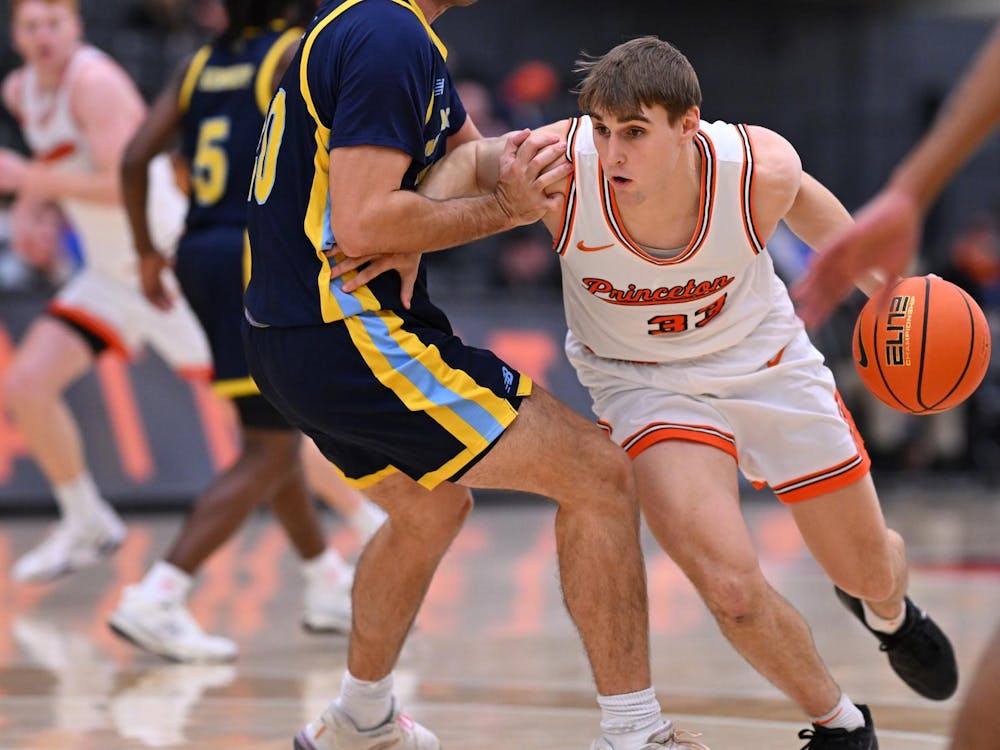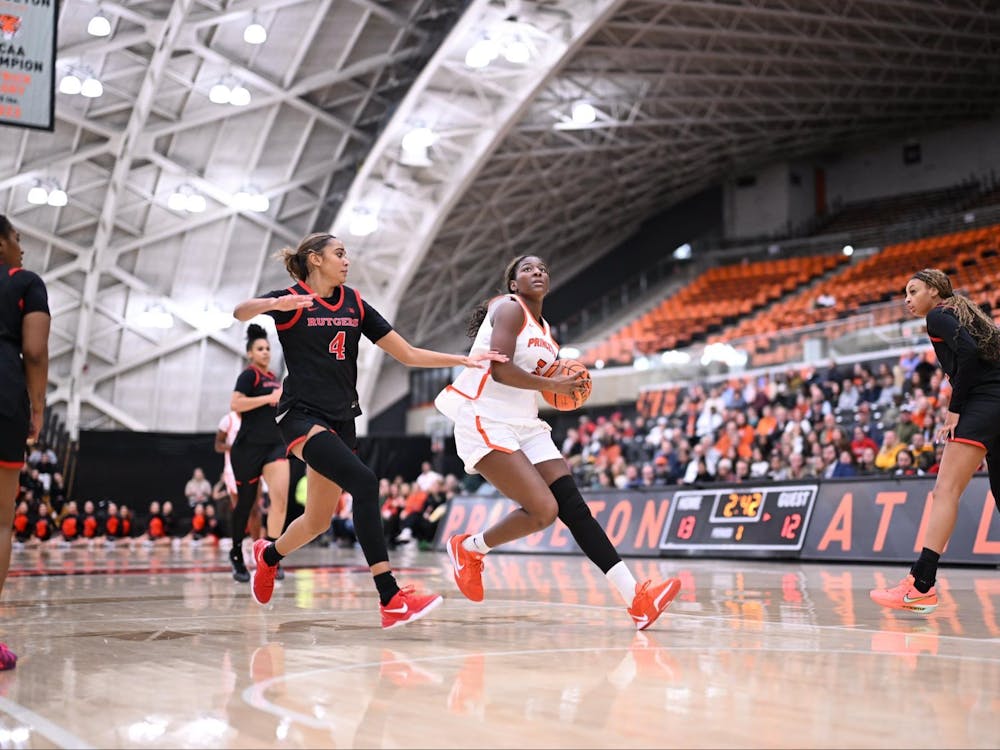Men’s basketball will try to turn its season around this weekend in match-ups against Columbia and Cornell at Jadwin Gymnasium. Princeton (12-5 overall, 0-3 Ivy League) is winless through three conference games for the first time since 2007 when they lost their first four league contests en route to a 2-12 record. Despite a sterling non-conference record, the Tigers have been unable to win close games recently, losing by three and six at Penn and Harvard respectively and taking Dartmouth to overtime.
A major difference between those three games and most of the team’s other games has been the halftime score. Princeton is 9-0 in games it has led at the half and 2-5 in games it hasn’t. The reason for this disparity is Princeton’s tendency to start the second half out slowly. Both games this weekend were within a point at the half, but turned into six- and 15-point deficits with ten minutes left. The Tigers usually wake up with around five minutes left, but as Coach Mitch Henderson ’98 has said a lot recently, “It’s a lot harder playing from behind.”
Another more apparent reason for the collapse is lack of defense. Any follower of Princeton basketball knows that the Tigers historically haven’t allowed many points. The program has led the NCAA in scoring defense 19 times, including 12 straight from 1989-2000. But this year’s team is allowing the most points per game in program history at 69.5. To be fair, it is only the weakest defense since 2007-08 when adjusted for tempo. Princeton’s best offensive efficiency in sixteen years won them games in November and December, but even it cannot overcome a defense that has only gotten worse in 2014, ranking among the bottom 50 in the NCAA for its last three games against Division I opponents. Teams have started realizing that the Tigers are vulnerable down low without a true big man. Penn’s duo of near seven footers dropped 17 points apiece and collected 20 combined rebounds. During league games, opponents have attempted nearly four times as many two pointers as three pointers, the tenth highest ratio in the NCAA.
“We need to defend. We’re not playing defense with any teeth. It’s the first thing to address,” Henderson said. “Obviously it’s impossible, but we’ve got to be thinking shutout every time we take the court. Body in front of man, the same way it’s always been.”
He also expressed concern that his team lacked the focus to play the whole game as they do the last five minutes. That would explain a lot, including the 33 turnovers last weekend from a team that averaged barely 10 a game.
Despite the sub-par performance as of late, the Tigers have had great shooting success from all over the court. They make 45.7 percent of their two point field goals and 37.7 percent of their three-point field goals, both in the top sextile of Division I teams. Since Princeton's ratio of three-point attempts to regular field goal attempts is much higher on average than its opponents, the Tigers rank in the top ten for points per shot. The Tigers also exhibit great teamwork, recording the NCAA’s 14th best rate of assists per field goals made at .617.
Individually, it’s been a standout year for senior guard T.J. Bray. The team captain leads the league in assists per game with 5.7, field goal percentage at 55%, and points per game in conference play at 20.3. He’s not just good for the Ancient Eight, either. Playing against above average teams, Bray is number one among Division I guards in two point field goal percentage at 67.6 percent, second for any position in points per field goal attempt, and 10th overall in assist percentage, which is the portion of made field goals he’s assisted while on the court. Most impressive of all, he is second in the country in offensive rating, a measure of overall offensive contribution adjusted for tempo and playing time. He’s making a case for more than just Ivy League Player of the Year. He controls the offense in every way, which is why the team excels in the exact same areas he does.
Columbia (13-8, 2-2), the Friday night opponent, shares a lot in common with Princeton. After beating woeful Cornell (1-17, 0-4) twice, the Lions lost games at Yale and Brown last weekend. Columbia shoots the three better than Princeton and almost as often. They have a very efficient offense, but don’t rebound particularly well. Their defense, though, is far more efficient than Princeton’s, allowing .95 points per possession versus 1.026. The Lions struggle mightily outside New York City, winning just two of eight games on the road. They’re led by forward Alex Rosenberg, who scores 14.1 points a game mostly off the bench, and guard Maodo Lo, who scores 14 a contest and was specifically mentioned by Henderson as a “tough matchup”.

Cornell limps into Jadwin Gym as one of just three teams in the country to be winless against division one competition. Not unsurprisingly, there are no bright spots for this Big Red team. They score 64.9 points per game while surrendering almost 80. They shoot 41 percent from the field while allowing nearly 50 percent. They grab 32.8 rebounds a contest while permitting over 37. The lone bright spot has been guard Nolan Cressler who has averaged 16.3 points per game, third best in the league.
“We’re not in a position to overlook anybody,” Henderson said in reference to the Cornell team. “They’re still a Division I team with good players.”








